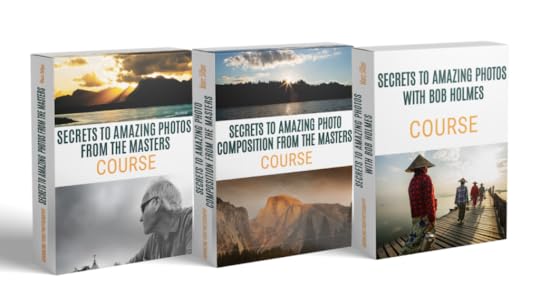Marc Silber's Blog, page 10
March 25, 2020
Why Dan Milner Prefers Fuji Cameras Over Other Equipment?
Dan Milner, a renowned documentary photographer, decided to discuss and clear people’s doubts about camera equipment.
Having asked by many on which camera equipment he prefers, Dan decided to lay out a list of photography gears he has used in his life.
Additionally, he also discussed why he uses Fuji Cameras.
To start with
Before detailing as to why he chooses Fuji cameras over the others, Dan decided to take us through the list of cameras and gears he has used since 1988.
Dan mentioned that Ricoh XR-P, Nikon N2020, Nikon FE2, Nikon FM2, Nikon FM3T, Nikon F3, Nikon F4, Nikon F5, and Nikon F6 are the cameras that he has used at one point in his life.
Out of these, the Nikon FE2 with a screw mount was the first camera that Dan used on an assignment.
Furthermore, Canon A2E, Canon Eos1, Canon Eos 1V, Leica M4-P, Leica M6 times 1, times 2, and Leica M4 are some of the other cameras that he has also used.
Dan still possesses the Leica M4. Out of the other cameras he has used, Dan feels Leica R6 times 2 has the best glass.
In the Fuji category, Dan has used Fuji 6*9 and Fuji 6*6/6*7 folding range finder. Dan feels the latter is an unbelievable camera but fragile.
Other cameras used in his career
Dan has Hasselblad 500CM to shoot commercially for ten years. He paid $65 for back, body, lens, the finder with this camera. Also, he bought a second Hasselblad FO3CW for $500 and put a digital back on it. Dan mentioned that it was pre-hipster, which was basically about finding how good Hasselblad is.
Dan has also used Olympus Olym4TI, which he thinks is a smoking little camera system. He also has two void lenders, range finders with an underwater housing system.
Dan feels Zeiss Rangefinder is an excellent camera. However, the only problem he faced with this camera was he had to carry screwdrivers on him because it fell apart all the time. Other cameras Dan has used are 4*5 crown graphic, Pentax 645, Pentax 6*7, Yoshika half-frame camera, Holga, Polaroid, and a Pentax K1000.
Dan also mentioned how, in the Pentax category, he always wanted to use the Pentax LX.
Why Fuji cameras?
It is interesting to note the different variety of equipment Dan has used before understanding why he prefers the Fuji cameras. To make things simple for photographers who are new to Fuji cameras, Dan specifies six points as to what caused his mind incline towards Fuji cameras.
Size –  Starting with size, Dan mentioned that the Fuji cameras are very much similar to the Leica cameras that he used, specifically the M4 and M6. Dan said that M4 is a little bit heavier than the Fuji cameras because they are made of brass, whereas M6 is made of zinc alloy, so it is a lighter camera.
Starting with size, Dan mentioned that the Fuji cameras are very much similar to the Leica cameras that he used, specifically the M4 and M6. Dan said that M4 is a little bit heavier than the Fuji cameras because they are made of brass, whereas M6 is made of zinc alloy, so it is a lighter camera.
Weight –  Secondly, Dan spoke about how he can carry this system all day, every day without thinking about it. Since when he is out for shooting, he tends to stay in the field for an extensive period. Hence, he prefers Fuji, which is even lighter than Leica, which he is used to carrying, and this is an essential factor for choosing Fuji.
Secondly, Dan spoke about how he can carry this system all day, every day without thinking about it. Since when he is out for shooting, he tends to stay in the field for an extensive period. Hence, he prefers Fuji, which is even lighter than Leica, which he is used to carrying, and this is an essential factor for choosing Fuji.
Capability – 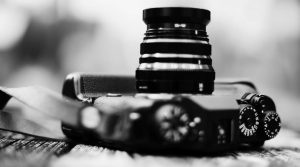 Dan feels this is a critical point to decide on a camera. Dan discussed how prior generations of digital cameras were a hindrance to taking photos. The reason was they had shutter lags, and they had bad viewfinders, hence weren’t good cameras. However, he feels this is a very capable camera. He would not have bought it if it didn’t work.
Dan feels this is a critical point to decide on a camera. Dan discussed how prior generations of digital cameras were a hindrance to taking photos. The reason was they had shutter lags, and they had bad viewfinders, hence weren’t good cameras. However, he feels this is a very capable camera. He would not have bought it if it didn’t work.
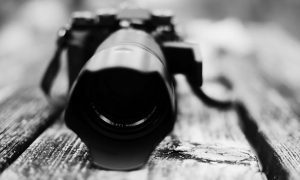 Dan also discussed how this camera is useful for the current project that he is working on as it is an incredibly difficult project, camera-wise. Currently, he is using Fuji 50-140, the 2A Fuji lens, and a 2x converter, and he feels that they are the best combination of that he has ever had in any system.
Dan also discussed how this camera is useful for the current project that he is working on as it is an incredibly difficult project, camera-wise. Currently, he is using Fuji 50-140, the 2A Fuji lens, and a 2x converter, and he feels that they are the best combination of that he has ever had in any system.
Menus – 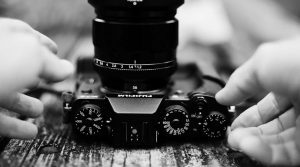 The fourth point Dan discussed is how he never uses menus in a camera. However, he had to use once because of settings adjustments for a Chinese lens called the Speed master on his X-T2. But the Fuji menus are simple and basic, which made his work easier.
The fourth point Dan discussed is how he never uses menus in a camera. However, he had to use once because of settings adjustments for a Chinese lens called the Speed master on his X-T2. But the Fuji menus are simple and basic, which made his work easier.
Ergonomics – 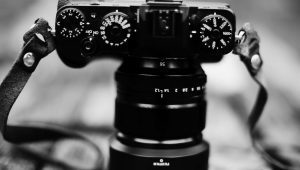 The fifth point Dan discussed was ergonomics and how easy and simple it is in the Fuji cameras. These cameras have dials on top for exposure comp and shutter speed adjustments. Additionally, ASA, film speed settings are on the left, and the dials that go from a single exposure, continuous, high, low, movies, and many more are easy to use and change even in the fields, with gloves and also in the dark. On a funny note, Dan says how he would have quit photography if he had to go menus every time for adjustments.
The fifth point Dan discussed was ergonomics and how easy and simple it is in the Fuji cameras. These cameras have dials on top for exposure comp and shutter speed adjustments. Additionally, ASA, film speed settings are on the left, and the dials that go from a single exposure, continuous, high, low, movies, and many more are easy to use and change even in the fields, with gloves and also in the dark. On a funny note, Dan says how he would have quit photography if he had to go menus every time for adjustments.
Cost – The last and final point that Dan talked about was cost. Dan found two bodies, three lenses, a booster, and some other things in Fuji equipment to be inexpensive and affordable. You can get some aspects to your camera equipment, which is superior to what the Fuji has, says Dan. However, up until now, Dan hasn’t run into a situation where the Fuji doesn’t work, or he would wish for a different camera.
On a final note
On a final note, Dan mentioned how Fuji cameras have never given him any problems like the others he possessed. He had his Leicas, Canons, Olympuses malfunction. However, he hasn’t seen his Fuji cameras malfunction in hostile weather, whether in the cold or hot. Dan suggests trying out the Fuji equipment.
The final piece of advice Dan had for the photographers was, “Go use your camera.”
The post Why Dan Milner Prefers Fuji Cameras Over Other Equipment? appeared first on Advancing Your Photography.

March 17, 2020
Four Tools To Stay Healthy Emotionally During Coronavirus Crisis
What I want to talk to you about are some of the remedies that you can use to counteract the confusion and instability that we’re facing as a society, not the physical side, since that information is readily available. I’m giving you four ways to stay grounded and present during any tumultuous time such as this. I’m passing along some of the tools that I have found have been extremely workable from my book Create: Tools from Seriously Talented People to Unleash Your Creative Life.

1. “Walking is man’s best medicine.”
Hippocrates gave this advice 2,400 years ago. Much later, philosopher Søren Kierkegaard (1813–1855) wrote about the curative power of walking:
“Above all, do not lose your desire to walk. Every day, I walk myself into a state of well being and walk away from every illness. I have walked myself into my best thoughts, and I know of no thought so burdensome that one cannot walk away from it. But by sitting still, and the more one sits still, the closer one comes to feeling ill. Thus if one just keeps on walking, everything will be all right.”
With what we’re facing today, walking may not be the literal answer. Even if you can’t walk you can certainly find an activity that gets you out of your mind every day putting your attention on the world around you. As Thomas Jefferson advised,
“The object of walking is to relax the mind…Divert your attention by the objects surrounding you. Walking is the best possible exercise.”
Also, while we have to stay informed, too much of that unfortunately pulls your attention down into the chaos and uncertainty of it all. So, make sure that you extrovert your attention from your phone and other screens. Taking a break will certainly fortify you to deal with the crisis more effectively.
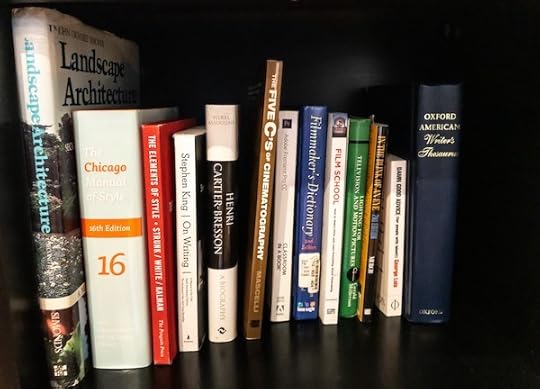
Some of the books in my creative library
A part of my creative library
2. Do what you love to do creatively.
In addition to whatever you have to do to stay on top of the current scene, make time to also do whatever it is you love to do creatively. That is, match or better the amount of energy that you are pledging to reading the news and “preparing,” with the amount of energy you are giving to your creative outlets. If you’re a photographer, pour energy into it. And pour energy into learning more about your craft, which is something I recommend no matter what. That’s taking the advice of Socrates (c. 470–399 BC) whose key message was wisdom will set you free. There’s a bit of a freedom that accompanies educating yourself in your craft. Put time and effort into that daily.
3. Stay in touch.
Although we’re in a mode of social distancing, it doesn’t mean we have to fall out of touch. Photographs are magical. They are one of the major ways that we as modern human beings communicate to others. And thanks to social media, we’re able to do that in significant volume, instantly. Photographs, as a form of communication, transcend geographical, linguistical, political, and racial barriers. It is important to remain connected with others. No matter what artistic form you choose, you are communicating to others your feelings, thoughts and observations.
4. How have you overcome similar challenges?
It’s therapeutic to look at past comparable problems, or to reflect on prior times of similar turmoil to see how you were able to overcome them.
As kids, growing up as I did in the Cold War, we were constantly faced with the idea that we could just be blown to bits at any moment. Like me, I’m sure you remember similar moments where something pierced your childhood world. Leaving you questioning everything you took for granted, unable to process the reality you had just learned.
One such experience for me in my childhood was in the midst of the Cuban missile crisis, I remember coming home from school finding my mom totally distraught. She was listening to the radio on our big speakers that we had for high fidelity music. Instead of playing soothing music, the speakers were delivering a doomsday message saying that at any moment the Russians could launch missiles from Cuba, and that would just be the end our civilization. At the time, seeing my mother, my emotional rock and point of stability, so completely upset and shaken, was more impressionable than the doomsday message blaring over the speakers.
Thankfully, we lived through this, and other similar incidents. At times of utter chaos, dismay and upset, there’s two ways one can go: succumb and go down; or find an outlet to counteract the horror of the moment. At the age of twelve I had already become a photographer. I poured on the coals on my purpose to have a way of expressing myself through art.
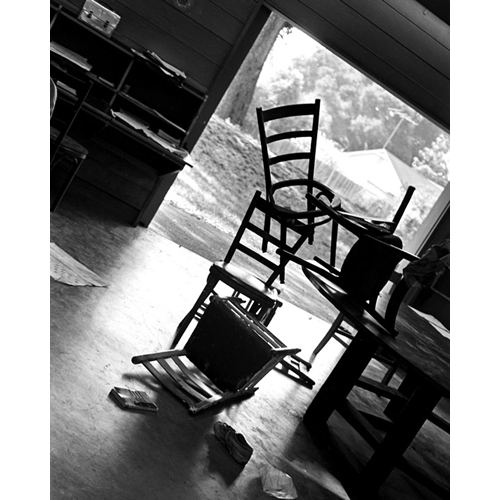
My classroom in the 7th grade reflecting the time of the crisis
I do believe this environment of the Cold War that I grew up in spurred on the entire American culture, going through an amazing Renaissance in the 1960s. I’m not saying that just because I grew up in it. It’s evident when you look at the music and art and writing that came out of that era. One of the reasons for the cultural revolution that took place was that we basically felt like we were threatened with annihilation. So when faced with the choice of two ways to go, that raised a culture of people who chose the higher road. We found an outlet to relieve the horror of the reality rather than succumb and go down.
I hope these remedies are of help with what we’re going through, and beyond. These may be hard times, but yes, this too shall pass, and we can make it pass a bit more easily by taking stock and staying grounded. I welcome your comments and feedback, whether you agree or not. Let me know how you feel about what I’ve discussed, and feel free to share your own experience. And be sure to keep an eye on this blog for more tools to help.
The post Four Tools To Stay Healthy Emotionally During Coronavirus Crisis appeared first on Advancing Your Photography.

December 2, 2019
Awesome Cyber Monday Deals!
We’re excited to share with you all some fantastic Cyber Monday deals on amazing courses that we’ve released! But you’ll need to hurry up as these deals end December 2, 2019 at 11:59am!
Secrets to Amazing Photos with Bob Holmes – Cyber Monday Special $997 $197
Join National Geographic Photography Bob Holmes as he goes out on assignment! This course follows Bob Holmes for 2 days as he shows how he handles harsh lighting, working with subjects, what equipment he uses, and composing his images. This is a fantastic look at how a professional photography works. You don’t hear him talking about what he does, you see him doing what he does!
Find out more about this fantastic course here.
Secrets to Amazing Photo Composition From the Masters – Cyber Monday Special $347 $147
Some people believe composition is a set of rigid rules. Others think that there are no rules and you have to just feel it. As usual, the truth is somewhere in the middle. Masters of photography and painting and long understood the principles of composition, and how to evoke specific emotions in your compositions. This course gives you 83 tools to help you learn strong composition that will help you tell your story.
Find out more about this fantastic course here.
Secrets to Amazing Photos From the Masters – Cyber Monday Special $197 $67
Photography has a specific cycle that you can learn by studying the masters. From visualizing your image to sharing it with the world, this course will give you tips and advice from many amazing photographers that have understood and used this cycle to create their beautiful images. This course will give you a solid framework to view your photography and help you to intentionally create your images from beginning to end.
Find out more about this fantastic course here.
Secrets to Amazing Photos Bundle – Cyber Monday Special $347
Get access to all three of these amazing courses for one fantastic price! From Bob Holmes, composition and the cycle of photography, these courses will help you to advance your photography! But this deal is only around until December 2, 2019 at 11:59am! So don’t miss out!
The post Awesome Cyber Monday Deals! appeared first on Advancing Your Photography.

November 7, 2019
Following Your Photography Passion

Una Pura Verdad – A Simple Truth – is a Photographic Narrative of New Mexico by Daniel Milnor. In September 2012 Daniel asked me if I would film a mini-documentary about his long-term New Mexico photographic project. I am happy and proud to now be able to release the documentary movie Una Pura Verdad.
Una Pura Verdad Credits
Directed, filmed and edited by yours truly, Flemming Bo Jensen.
Original soundtrack music composed and performed by David Goldberg of Santa Fe, NM.
Additional Zozobra footage by Amy Kawadler (you nailed it! and thanks for the equipment).
Audio mixed at Moremax Studios in Copenhagen by Frederik Birket-Smith – thanks so much my friend.
And a big thank you to my friend Laura Gerwin and her family who let me use their holiday home in Santa Fe as my editing base. Most of the editing took place over 8 days around the clock in this great house.
Thanks to Charlene Winfred for great constructive feedback
Making of Una Pura Verdad
The movie was filmed over a period of 4 days in New Mexico, September 2012. True documentary guerrilla shooting. I basically stalked Daniel with a camera like a fly–well not on the wall– but Daniel’s shoulder. Shot entirely handheld, on a Canon 5D Mk II, primarily on the great run-and-gun doco Canon lens 24-105mm f/4 IS. Audio was captured on a Zoom H1 recorder mounted on the camera. We used the Zoom with a lav-mic for the recording of the voice-over.
There was very little time to prepare for this shoot, but I had some rough ideas in my mind. I wanted it to feel cinematic, to look cinematic and to have a stream-of-consciousness style voiceover instead of the standard talking-head interview style. Daniel is a master storyteller and it was important to me that his narration, his storytelling in raw unscripted form was the driving factor. I also wanted the movie to be as much about New Mexico as our hero. My decision to not record any interview shots did add a few extra challenges in editing, as you cannot just cut to a talking head when you go from one scene to the next, but I am happy I stuck to my idea.
The very important voiceover is a story I pieced together from hours of recording Daniel. I basically had Daniel sit alone, turn on the audio recorder and record stories about himself, the project and New Mexico. Then I listened to hours of audio over and over and over again (NOT recommended if you want to stay sane!) and wrote down all the bits I really loved. I then assembled the voiceover from small stories, small snippets. Sometimes just a sentence here and there and pieced all of this together and created the final voiceover for the film. Took a lot of time but I wanted a non scripted raw voiceover.
I edited entirely in Adobe Premiere, the movie only has minimal colour grading using Premiere’s fast color corrector, wanted a raw documentary look to the movie. Entire movie is shot handheld, some clips stabilized in Premiere.
David Goldberg, a Santa Fe based photographer and musician composed and performed the beautiful original score, thanks David, a great collaboration. Have a look at David’s music website – and also his photography.
I arranged and mixed all the sound effects, voiceover and music – these final tracks were then exported and brought into the amazing Moremax Studios in Copenhagen where my friend Frederik Birket-Smith worked his magic on the audio resulting in truly crisp gorgeous sounding audio. Thanks so much Frederik.
I have been involved in documentaries before but just as a camera man. Being the first documentary I directed, edited, filmed and produced I made hundreds of errors, good old fashioned learning-by-failing. But many things also worked out well, I loved working on this movie. I have poured hundreds maybe thousands of hours into it and I am happy with the result. I feel it is one of the best things I have ever done and am pumped for more.
Thanks to everyone involved in Una Pura Verdad, it was truly a labour of love for me, and more documentaries and movies will definitely be forthcoming.
This post was originally written by Flemming Bo Jenson. For more stories, be sure to follow our blog and subscribe to our YouTube channel.
The post Following Your Photography Passion appeared first on Advancing Your Photography.

November 3, 2019
How to be an Active Photographer
What are the benefits to being an active photographer?

You are a photographer. How do you approach your photos? Do you insert yourself with your subject to get the shot you want? Do you want for the “right photo” to come to you?
Our good friend, Bob Holmes joined Marc Silber and had the exact discussion recently. They discussed the importance of being an active photographer.
Photography isn’t a spectator sport; you won’t get much by sitting in the bleachers. You need to be on the field, in the action to get the type of photographs you want.
Being Active
A personal story from Marc’s own life is from when I was a teenager. He was on a class trip and directed his friends to jump from the sand dunes.
He went to the bottom and yelled action, just like a director. The picture below is a result of being an active photographer.
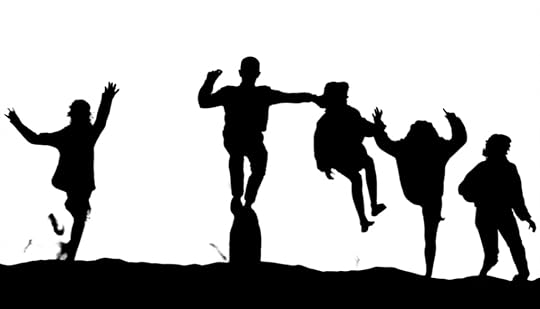
The first step in photography is vision. You visualize the photograph you want. After that, it is your responsibility to direct your subject or your friends in order to get the photograph that compliments your vision. That’s how you become an active photographer.
Furthermore, on Marc’s most recent outing with Bob Holmes, they were able to get the shot they wanted by Bob being assertive.
Their goal was to take a photograph of people walking up a set of stairs. First, there was an ugly, yellow stand in the way so they moved it.
Then, Bob arranged the people to walk up the stairs on his count so it wasn’t random. Bob was active and he directed the people to do exactly what he needed. This resulted in the photograph he had pictured.
Results of being Active
You may be surprised by your final product could turn into by being physically assertive.
For example, Marc took pictures in Medina and was fascinated by people just walking by a doorway.
He wasn’t entirely certain what he was going to do with it; however, he ended up taking about thirty photos.
Then, *click*. It donned on him, he could make a contact sheet. (Seen below)
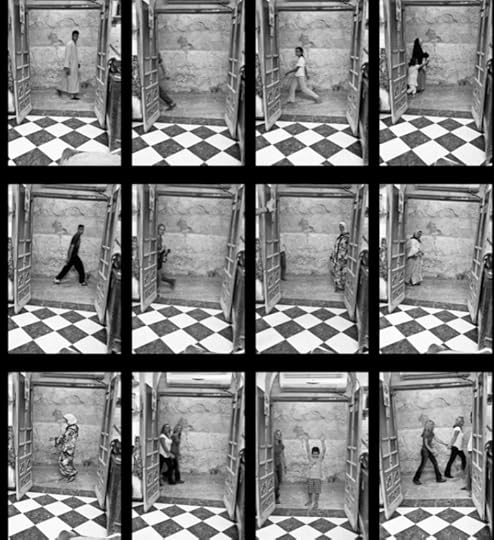
A sequence of people walking by that doorway. It became an interesting series, as well as a story itself.
Silber actively knew what he wanted. He acted upon his vision and was able to create an interesting contact sheet.
Moral of the Story
Being a photographer is more than just snapping the photo. Don’t just take your camera and hope for the best, hope that something will just happen in front of you.
You set the vision. You set the idea. Then you go out to capture it. — Marc Silber
The better you’re prepared, the more you’re in control.
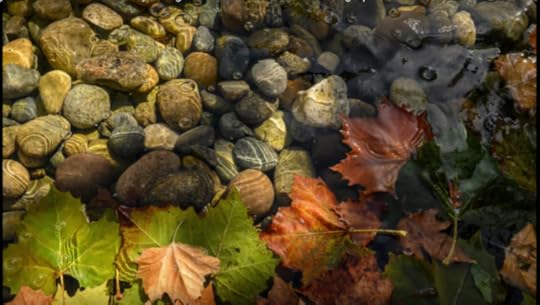
You have a vision of your shot. Now, be in control of your subject, of your surroundings to obtain the shot you have envisioned.
Practice. Use your camera. Use your vision.
And have fun.
Be sure to check out more stories on our blog and subscribe to our YouTube channel for more great content!
The post How to be an Active Photographer appeared first on Advancing Your Photography.

October 23, 2019
How to Convey Emotion Through Images with Deanne Fitzmaurice
Deanne Fitzmaurice is a Pulitzer prize-winning photographer and photojournalist known for capturing intimate and emotional stories through images.
I had the pleasure of sitting down with Deanne to discuss her methods for taking intimate and emotional photographs.
She was kind enough to walk us through her thought process of photojournalism photography as well as portrait photography. We were able to discuss the mental switch between the two.
In the Beginning
Deanne shared that in the beginning of her career she would walk into a situation with the expectation that everyone would be natural, comfortable and reveal themselves to her.
She discovered quickly that that was not the case.

Fitzmaurice realized she must put the subject at ease, connect with them in order to make them feel comfortable.
It is important to make that fundamental human connection, as Fitzmaurice puts it. You speak honestly and from the heart in order to help your subject feel comfortable.
“This is who I am, why I’m here. This is me and what I care about.”
Share a bit about yourself, open yourself up so that your subject gets to know you and doesn’t feel as nervous in the situation.
The tricky part comes after, Deanne shares. Okay, you’ve made that connection. Your subject feels comfortable. It’s time to fade into the background and let the moments unfold in front of you.
Switching Gears
As a photojournalist, Deanne is used to being a fly on the wall. Letting moments unfold in front of you.
To switch gears from that to directing someone for a portrait photo is very different.

You have to mentally switch gears. Normally, Fitzmaurice isn’t telling anyone what to do because she is the moving piece, not her subject.
For portraits, she must become a director. Telling her subject where to sit and what to do.
An obstacle when doing portraits is her subject. More often than not, her subject is in town for a short period of time so there is only a small window to get the portrait photos needed.
This loops around back to connecting with your subject. In time contraints like this, Deanne still takes the time to connect with her subject, just faster.
The experience she shared with me was: her subject was Matt Damon. She knew he was a Red Sox fan and being from Boston herself, Deanne was able to use that as a connection point. They discussed the Red Sox for a bit and Damon just lit up, relaxed and they were able to get the portraits done, according to Deanne.
Tips for Strong Composition
Fitzmaurice shared that a key element to strong composition is layering.
Layering- defined as having a foreground, a middle ground and a background that are all working together.
For example, the background is giving you information on the foreground.
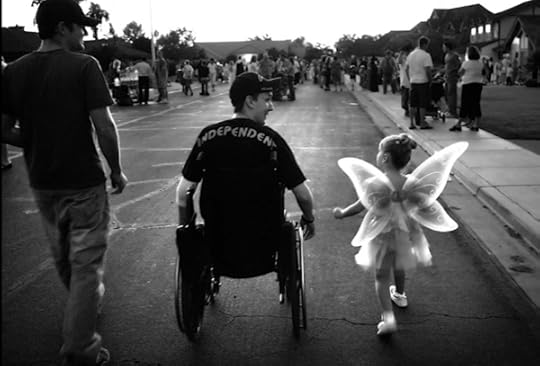
Layered photographs have a strong composition making them that more interesting because your eyes move around, says Fitsmaurice. When they’re strongly composed, you have all these small pictures within a big picture.
In order to achieve these layered photos, take everything into consideration. You’re just looking at the foreground but as the background as well. Taking every little detail in and keeping a sharp eye out for anything that may be a distraction from your subject.
Sports Photography
A topic Deanne has always loved is sports photography.
She has covered Super Bowls and World Series.

Fitzmaurice describes it as exciting. You’re standing on the sidelines, side by side with the best of the best sports photographers.
In that situation, you cannot screw up. You have to nail the shot. It sounds incredibly nerve- wracking but that’s what Deanne likes about it. It keeps your adrenaline going.
You have to anticipate what’s going to happen, where the next play is going to be and be ready.
And on that note
It was a delight to sit down with Deanne Fitzmaurice and listen to hear experiences in the photography world.
She was kind enough to leave us with one final piece of advice.
“Follow your instincts. Go towards what you’re passionate about. In terms of connection with a subject– be honest, speak from the heart.”
There will always be people telling you ‘no’ or that you can’t, don’t let them slow you down.
“Persevere.”
Thank you, Deanne.
Be sure to check out more stories on our blog and subscribe to our YouTube channel for more great content!
The post How to Convey Emotion Through Images with Deanne Fitzmaurice appeared first on Advancing Your Photography.

October 7, 2019
The Best Deal In Photography Right Now
We’re all trying to move to new levels creatively.
Imagine an easy and very affordable way to take a huge leap in your photography skills, right now.
You know how passionate I am about teaching photography – and that it’s not about having the latest gear, but about having new skills. You’ve seen this in my books, workshops and my hundreds of videos.

As someone who is interested in improving their creativity and photography I knew you’d want to hear about this fantastic deal in photography education. It’s a huge bundle of courses from some of the biggest names in the industry (including me;) Here’s the link to get it!
Just some of the courses include Peter Hurley who will teach you his secrets for outstanding portraits. My friend Serge Romelli will show you his magic for processing in Lightroom. And in mine I give you a full course in photography to advance to whole new levels. And there are over 27 more courses in the bundle.
But the offer ends tomorrow (Tuesday) at noon Pacific time. So don’t miss out on the best deal in photography — I really mean it!
The bundle totals over $3,000 but it’s priced now at just $89 (what’s wild about this is my course alone is over that price.). The cool part is that 10% goes to charity so it’s a total win, win.
Please head over and grab yours, you won’t be disappointed (unless you let this one get away.)
BTW— I’m taking the courses too – I’m dedicated to constantly learning and improving my craft and there’s plenty here to learn from.
Also with the holidays coming up this makes a wonderful gift for photographers you know (I already have mine, thanks
September 28, 2019
Hello, friends

Dear friends,
As you know, I have recently launched Create: Tools from Seriously Talented People to Unleash Your Creative. We are excited about the great potential of this title based on initial reviews, interviews and feedback I have received from many of you. A number of you who focused your comments on the business, motivation, advertising, personal development and spirituality spaces were especially heart warming to read.

Now that the researching, writing and publishing of the book is complete, it is time to focus on book marketing and publicity. Today, I have one small request of each of you. As you know, Amazon.com impacts a significant amount of the success of titles today. Please consider reviewing this book on Amazon as soon as possible. As many of you are well aware, this book is quite unique based on the wonderful group of individuals I featured and the insight on creativity that they have provided. Thank you for your support and I look forward to receiving additional comments about my latest work.
The post Hello, friends appeared first on Advancing Your Photography.

September 17, 2019
Tips on Photographing on Vacation with Dan Milnor

Photo by Dan Milnor
If you’re a photographer and you’re on vacation, how do you go on vacation and not drive the rest of your family crazy but still walk away with something good photographically?
This is the exact question discussed by our good friend, Dan Milnor.
Milnor has traveled to Maine many times over the years and he stated he always feels like he needs to walk away from a trip with something in hand.
Dan provided us with tips as to how you can enjoy your vacation but still feel like you captured something. Something that’ll help you build on something you’ve started or continuing something that you’ve started.
Tricks of the Trade
Vignette
When out and about, Dan shared that he will plant himself in a specific location, usually a place with a lot of foot traffic. He will sit there and people watch. Milnor’s attention would be on people’s conversations as well as the details around him.
While listening to a conversation, Milnor would “cherry-pick” parts of the conversation. He takes those pieces of the conversation and combines them with details of the environment around him. Then, he looks for a single photograph that sums up that little moment.
Dan compares it to having a one page chapter. It’s still a piece of the story, a good part of the story, it’s just a smaller piece of it.
2. Put yourself on a clock
It’s important to give yourself a timeline when you’re on vacation but wish to take a good photograph. Give yourself ten minutes Milnor suggests, to take that photo.
There can be so much going on that you see the potential of a million pictures but you only have ten minutes.
Milnor shared that this works for him because he used to be a photojournalist. In working for a newspaper, there were always deadlines. It was imperative that you never missed a deadline. Dan was once told that if he ever missed a deadline then he shouldn’t come back to the paper.
It is agreeable that that statement seems a bit harsh and a lot of pressure but Dan saw that pressure as a good thing.
Milnor stated that that pressure forces you to perform.
“ I literally have ten minutes or I’m gonna be like stealing cars by 5pm because I’m not gonna have a job.” – Dan Milnor.
Essentially, the pressure from the deadlines allowed him to focus. You forget everything else, any potential distraction is deemed unimportant because you have a job to do.
That’s why this method works for Milnor. While he’s on vacation but wants a good photograph, he gives himself ten minutes. That way, he gets a good photograph with time to spare to have a good vacation with family.

Photo by Dan Milnor
3. Mix your Media
There are many professional photographers who share this opinion of mixing your media.
For example, Dan mixes his media in the sense that he is a journal keeper. He’s been keeping a journal for years that he writes in everyday. It has notes, sketches, anything that went through his creative mind.
“Some of you can illustrate. Some of you can sketch. You’re not just photographers.” – Dan Milnor
Yes, your heart and your passion lie with photography but mixing your media can be beneficial to your creative mind.
Dan calls them little ways of catching little opportunities to be creative. Especially since, there may not always be time to photograph or maybe you don’t want to photograph at that moment. Writing, sketching, or illustrating provides you with the opportunity to still play with your creativity.
4. Choose a mini theme
Dan stated that a mini theme can be simple and obvious, such as objects of a specific color.
“What a mini theme allows you to do is build a body of photographs.”
By designating a theme for your photographs allows you to collect photographs that form a cohesive body that you can edit and create a print project.
The personal example Milnor used was double exposure. He was in Albania not too long ago and that was the first time he’d ever done double exposure. With that theme still in his mind, it carried it over to his trip in Maine.
Dan has been to Maine so many times that he had realized, he would be photographing the same people and places he always has been. Therefore, this theme allows him to create new and different photographs while still creating a “cohesive body.”
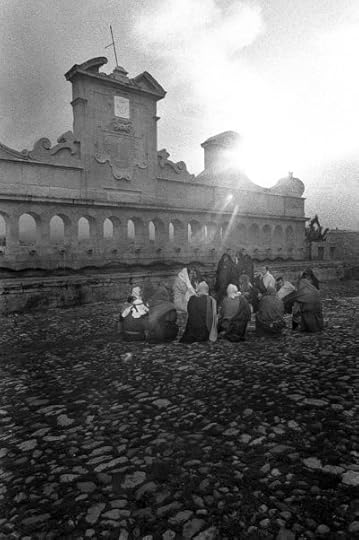
Photo by Dan Milnor
In regards to choosing a mini theme:
“It allows you to create a cohesive something instead of just a bunch of random.”- Dan Milnor.
What do you think?
We’d like to thank Dan Milnor for providing us with these helpful tips.
Click here to watch the full video on our YouTube channel Advancing Your Photography.
Here’s my question for you today:
Do you have any methods for taking photographs while you’re on vacation? If so, please share in the comments below.
Thank you.
The post Tips on Photographing on Vacation with Dan Milnor appeared first on Advancing Your Photography.

September 12, 2019
Note to Self

Photo by Jose Francisco Morales
Note to Self
How do you keep focused when under stress?
There are many who go through some level of stress everyday. It could be caused by almost anything in your day-to- day life, we all know that.
For many of us, our stress originates from our job. Are we doing our job well? Could we lose our job due to the mistake we made yesterday? Our self- confidence and self- worth can be challenged everyday.
The question is: how do you handle that stress?
We’ve recently come across an interview with New York Yankee relief pitcher, Adam Ottavino who shared with the New York Times how he deals with the mental barrier of self- doubt.
Ottavino shared that he writes everyday. He stated that he found comfort in writing in a journal every day.
Benefits of Journaling
“Keep a notebook. Travel with it, eat with it, sleep with it. Slap into it every stray thought that flutters up into your brain. Cheap paper is less perishable than gray matter, and lead pencil markings endure longer than memory.”- Jack London

Via New York Times
Ottavino uses his journal to track how he cares for his arm, sharpens his focus, how he plans on handling the opposing lineup as well as positive messages to himself.
It is important to remember how good you are at what you do; to remember all the good things you have done.
Ottavino shared that throughout his career, he has learned how to improve both the mechanics of his pitching and his mind.
“It’s not just about getting grooved but staying grooved, and being able to not lose mentally the whole time.”- Adam Ottavino
Marc Silber discusses a similar importance to writing in a notebook in his book Create. Silber states that you cannot let your feelings of ‘it’s not good enough’ or ‘I can’t do it’ stop you. It’s your creativity, your art, there is no right or wrong way; there’s just your way. Keeping a notebook handy to write down whatever you need can only be a benefit to your life.
Always having a journal on hand can help you organize and/or reflect on your day to day life. It can be for your techniques, stats and positive thoughts like Ottavino; for sketching or drawing; or for story ideas and poetry. Writing down whatever comes to your head is an effective coping mechanism for daily stresses.
“Writing it down matter to me. It’s like a reinforcement.”- Adam Ottavino
Stay Positive
“It’s always important every day to remind myself of the thoughts I want to have when I’m pitching.”- Adam Ottavino
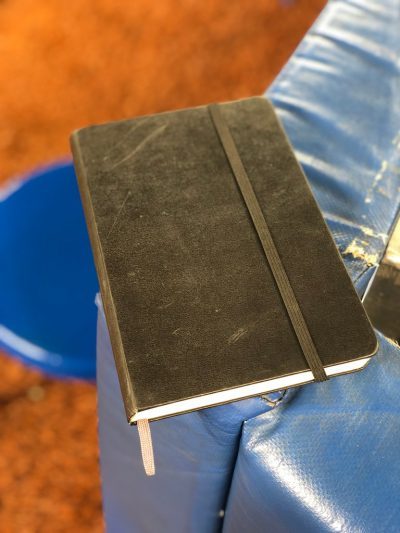
via James Wagner/New York Times
Ottavino described himself in his interview as confident but paranoid. Even with his years of practice to getting into and staying in a positive mindset, he still finds it difficult to push aside negative comments after a mistake.
It’s difficult to remain positive after making a mistake, no matter the circumstances. The key is to not lose focus. You have a goal that you want to reach every day so no matter what happens just keep pushing forward with confidence.
An important fact about Ottavino’s note taking he mentioned is he avoids using negative wording, such as ‘don’t’. Instead he aims more towards positive wording, stating something he can do.
No matter what you’re doing or how you’re feeling, grab a notebook and write it down. It can be a beneficial habit to your life.
The post Note to Self appeared first on Advancing Your Photography.


